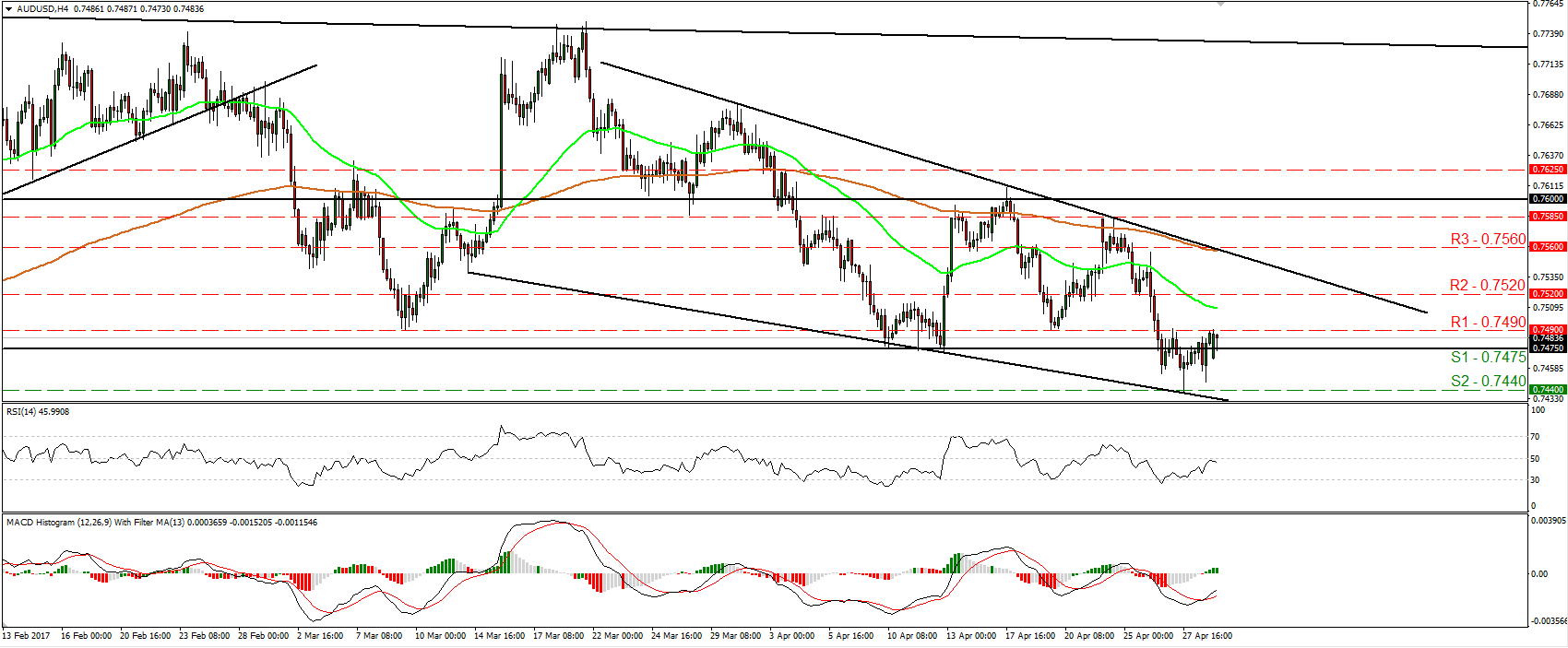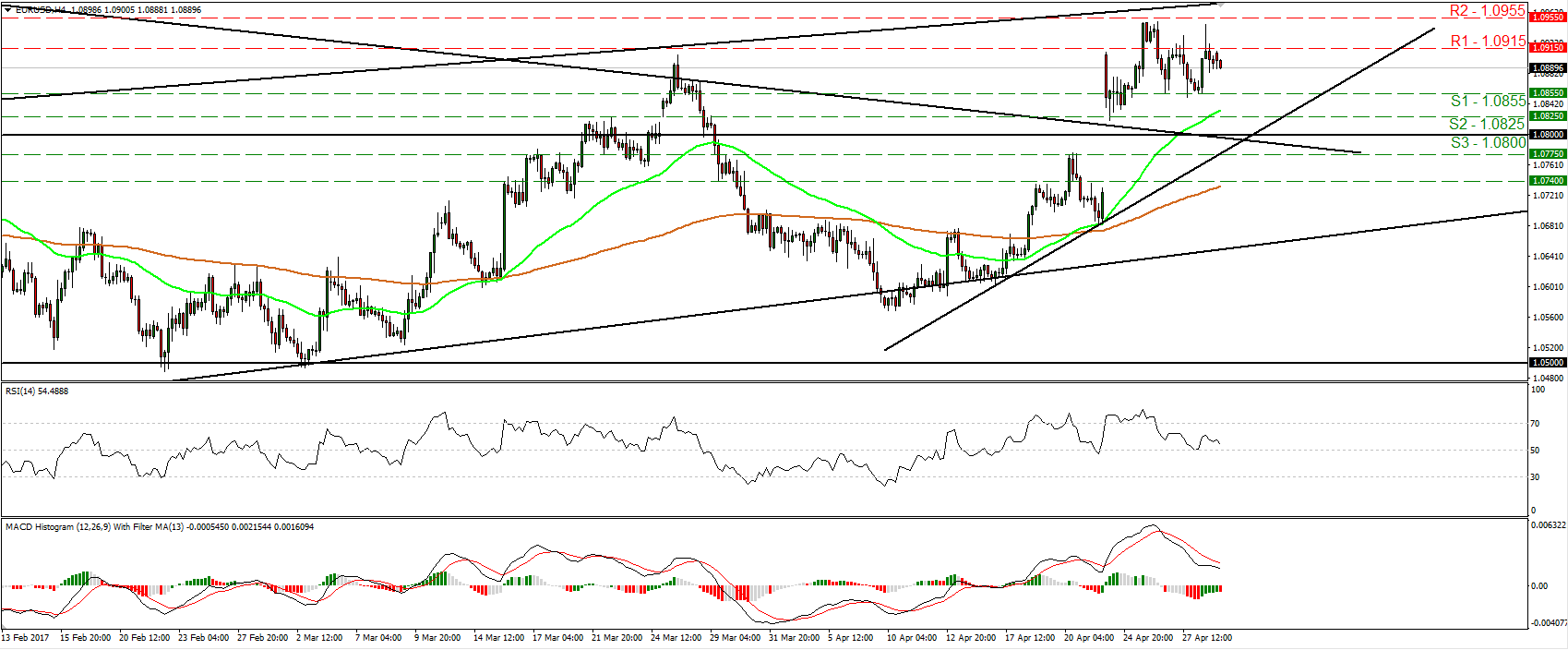Comentário Diário | 01/05/2017
RBA set to remain on hold; could shift to a more upbeat tone
• During the Asian morning Tuesday, the RBA will announce its rate decision. When they last met, policymakers highlighted the softness in labor market indicators, and that the recently announced supervisory measures with regards to lending could ease financial stability risks. Back then, this led us to understand that once these measures take effect, officials would be more flexible to cut rates again if needed.
• Nevertheless, expectations are for no action at this gathering, a view that we share. The latest jobs report showed a strong recovery in March, while the nation’s inflation data for Q1 indicated that the headline CPI rate returned back within the RBA’s inflation target range of 2-3%. The trimmed mean rate rose notably as well, to just a tick below the lower end of the target range. With these in mind, we think that the statement accompanying the decision may be relatively more upbeat than previously, something that could reverse some of AUD’s recent losses.
• AUD/USD traded somewhat higher on Friday and during the early European morning Monday, it is testing the 0.7490 (R1) resistance level. A somewhat more optimistic statement tonight could encourage the bulls to overcome that barrier and perhaps set the stage for extensions towards the next resistance of 0.7520 (R2). However, the price structure on the 4-hour chart still suggests a short-term downtrend. The rate is trading below the downside resistance line drawn from the peak of the 30th of March and as such, we would treat any recovery in the aftermath of the RBA meeting as a corrective phase.
Eurozone’s inflation data lift the euro
• The euro surged on Friday, following the release of Eurozone’s preliminary CPI data for April. Both the headline and the core CPI rates rose by more than anticipated, with the all-important core rate reaching its highest level since mid-2013. In our view, this progress in the profile for inflation is in line with the prospect of the ECB appearing more optimistic at its upcoming meetings, as has been suggested by media reports recently.
• Speculation on this subject could keep the euro supported in the near-term, but we think that the main determinant of the Bank’s language at the June meeting will probably be the CPI data for May, due to be released on the 31st of the month. Until then, the case for some near-term euro gains is also supported by French election polls, which continue to show Macron being safely ahead of Le Pen.
• EUR/USD spiked higher on Friday after Eurozone’s CPI data came out. Nevertheless, the rate hit resistance slightly below the 1.0955 (R2) hurdle and then it pulled back. Even if the rate continues to retreat for a while, we still believe that the outlook is cautiously positive. The pair continues to trade above the prior downtrend line taken from the peak of the 3rd of May 2016, and also above the upside support line drawn from the low of the 3rd of January.
Today’s highlights:
• During the European day, the economic calendar is empty. Markets will remain closed in the UK, Germany, France, Switzerland, Sweden, and Norway, in celebration of Labor Day.
• Nevertheless, later during the day, we will get loads of US data. Let’s kick off with personal income and spending for March. Income is expected to have slowed, while spending is forecast to have accelerated. We also get the core PCE price index for the month, which we think is likely to slow on a yearly basis. Finally, the ISM manufacturing PMI for April is forecast to have declined. Such discouraging US data could help EUR/USD to turn up again, break above 1.0915 (R1), and perhaps aim for another test near 1.0955 (R2).
As for the rest of the week:
• On Tuesday, the RBA will announce its rate decision, as we outlined above. On Wednesday, all eyes will be turned to the FOMC rate decision, where the forecast is for borrowing costs to be kept unchanged. We expect policymakers to maintain a more or less balanced tone, with risks skewed towards a more cautious narrative than previously. As for the US data, we get the ADP employment report and the ISM non-manufacturing PMI, both for April. On Thursday, the Norges Bank decides on interest rates and then on Friday, the main event will the US employment report for April. Canada’s jobs data for the same month are also due out.
AUD/USD

• Support: 0.7475 (S1), 0.7440 (S2), 0.7390 (S3)
• Resistance: 0.7490 (R1), 0.7520 (R2), 0.7560 (R3)
EUR/USD

• Support: 1.0855 (S1), 1.0825 (S2), 1.0800 (S3)
• Resistance: 1.0915 (R1), 1.0955 (R2), 1.1000 (R3)